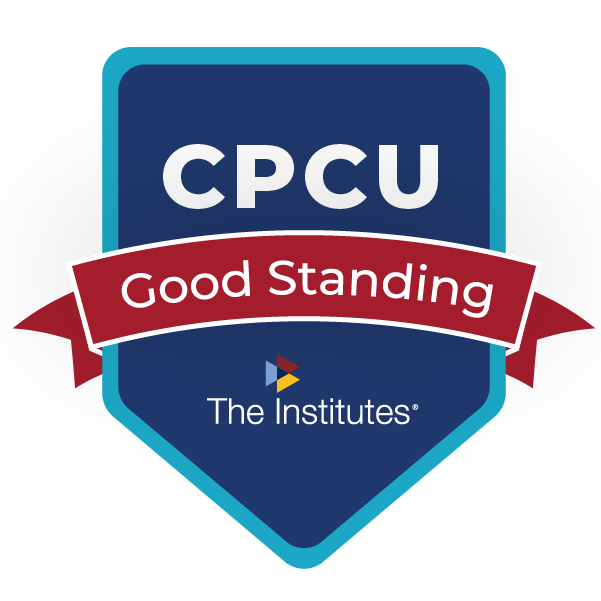Quantifying Life
June 4, 2014 – When I began my insurance career more than thirty years ago, I started out as a Homeowners Claims Examiner.
Then, as today, the job involved investigating a policyholder’s claim for damages and, once coverage was verified, paying the claim subject to any limitations, policy provisions and company procedures.
If hail damaged a policyholder’s roof, it was fairly easy to ascertain that claim’s value since contractors usually charge the same amount of money for any given job give or take.
Square footage times price per square foot equals value of claim.
If a policyholder had a television set or audio equipment stolen during a burglary, pricing suitable replacements was equally straightforward.
While there might be occasional points of disagreement, generally the insureds were satisfied with their resolution since they had many reference points for valuing tangible items.
They knew what it would cost them to buy a suitable replacement in the marketplace.
 When it comes to placing value on human life following a covered liability loss, however, the claims professional’s job is significantly more daunting.
When it comes to placing value on human life following a covered liability loss, however, the claims professional’s job is significantly more daunting.
Marketplaces for replacement people do not exist and placing value on sorrow is an infinitely less precise task.
Catastrophic claims involving high profile litigation where large numbers of plaintiffs are involved pose special challenges and often involve the services of a “special master” – an authority appointed by a judge to ensure rules and orders are followed and parity is achieved – to dispense settlement funds.
Today’s CNNMoney article about the recent General Motors Recall highlights some of the challenges the special master can face.
When an accident results in the loss of life, structured settlements are a superior method of providing aid and comfort to the survivors.
While no amount of money can ever adequately compensate someone for the loss of someone dear, structured settlements can, at a minimum, permit some semblance of financial normalcy following the tragedy.
If the decedent was the principal wage earner for the family, arranging for cash flows to replace lost income can help ease some of the stress the family will face moving forward.
Structured settlements can also even help prevent a second catastrophe from occurring.
The dangers of large cash lump sums awards are well documented. Simply put, when money is available, the temptation to spend it is often too great to resist.
Add to that the guilt many people feel for having money when a loved one was killed and emotions can overwhelm a person rendering sound decision making problematic.
Take the New York Post story from 2005 about Kathy Trant – a 9/11 widow who, in less than four years, burned through nearly $5 million in donations and Victims Compensation Fund proceeds.
Fortunately, most of us will never be in a position to know how we might respond under similar circumstances.
Sadly, though, the world is imperfect and people sometimes die from injuries sustained in an accident leaving behind survivors tasked with the charge of continuing on.
Our jobs as claims, settlement consulting and legal professionals is to do everything possible to ensure survivors are fairly compensated for their losses.
Fortunately structured settlements are available to aid us in helping clients make that difficult transition to life after such devastating losses.
With unique features that provide guaranteed income which is 100% tax-free with no management fees or expenses, structured settlements are the ideal choice for these types of claims.
Structured settlements won’t bring someone back. But they help honor the memory of those lost and should be considered on claims involving fatalities.
Posted: June 4, 2014 | Category: Articles, Blog, Structured Settlements | Comments Off on Quantifying Life
$2.5 Billion DePuy ASR Hip Settlement Accepted
 May 16, 2014 – The law firm responsible for filing the very first law suit in the nation against DePuy Orthopaedics alleging an artificial metal-on-metal hip the company manufactured was defective, announced today that the landmark $2.5 billion settlement negotiated last November has been accepted by the required number of plaintiffs and can now proceed.
May 16, 2014 – The law firm responsible for filing the very first law suit in the nation against DePuy Orthopaedics alleging an artificial metal-on-metal hip the company manufactured was defective, announced today that the landmark $2.5 billion settlement negotiated last November has been accepted by the required number of plaintiffs and can now proceed.
Walkup, Melodia, Kelly & Schoenberger issued a press release today announcing details of this development.
Our firm has been closely monitoring this particular litigation since its inception for a variety of personal and professional reasons.
We established a companion website more than three years ago dedicated to helping this special class of plaintiffs with whom we feel a special connection.
If you or anyone you know is a member of this settling class or to learn more about our interest and ability to help, please visit our companion website at:
ASRHipSettlement.com
With much of the DePuy ASR hip settlement litigation drawing to a close, now is the time to ensure your last step is the one that’s right for you.
For many, an all cash settlement will make the most sense.
But others will want to take advantage of a unique settlement opportunity not available to the general public.
Those who opt for the latter can arrange to structure all or part of their recovery in such a way that guaranteed future income – which is 100% tax-free – will be paid to them according to a schedule they choose.
Many will find this structured settlement method preferable for its safety, security, tax efficiency, competitive relative rate of return and ease of use.
IMPORTANT: Certain tax code restrictions and limitations exist so it’s vital for clients to understand their options before taking receipt of any settlement funds.
We’re here to help. Call today for a confidential, no cost, no obligation consultation about your settlement.
We understand what you’ve been through and look forward to helping you make the right choice about your DePuy ASR hip settlement.
Posted: May 16, 2014 | Category: Articles, Blog, DePuy ASR Hip Recall, Structured Settlements | Comments Off on $2.5 Billion DePuy ASR Hip Settlement Accepted
Law Day, USA
May 1, 2014 – Today our firm celebrates Law Day in honor of our many friends, clients and business partners who serve in the legal, insurance and law enforcement communities and related fields.
Some excerpts from Public Law 87-20
 ” … a special day of celebration by the people of the United States …
” … a special day of celebration by the people of the United States …
… in appreciation of their liberties and the reaffirmation of their loyalty to the United States and of their rededication to the ideals of equality and justice under law in their relations with each other and with other countries; …
… for the cultivation of the respect for law that is so vital to the democratic way of life …
… inviting the people of the United States to observe Law Day, U.S.A., with appropriate ceremonies and in other appropriate ways, through public entities and private organizations and in schools and other suitable places.”
Happy Law Day to all.
Promising Research for Spinal Cord Injuries
 April 8, 201 4 – According to the National Spinal Cord Injury Statistical Center, approximately 12,000 new cases of spinal cord injury (SCI) are reported each year with motor vehicle crashes accounting for a plurality of those reported since 2010 (36.5%).
April 8, 201 4 – According to the National Spinal Cord Injury Statistical Center, approximately 12,000 new cases of spinal cord injury (SCI) are reported each year with motor vehicle crashes accounting for a plurality of those reported since 2010 (36.5%).
In what is being heralded today as a major scientific breakthrough, paralyzed patients may have reason to hope they may some day walk again.
You will be absolutely amazed when you see this CNN Health video that accompanies the attached article. ![]()
Those seeking a deeper, more technical analysis of the subject may wish to seek out a copy of today’s issue of Brain where they can read “Altering spinal cord excitability enables voluntary movements after chronic complete paralysis in humans.”
As a settlement planning specialist, I am often called upon to design cash flows which coincide with life care needs of those whose mobility limitations are the result of a motor vehicle accident and who need to make a personal injury settlement last a lifetime.
And thanks to news like this, that lifetime just got a little bit brighter.
Congratulations to the amazing researchers and the funding that supports them for this exciting development which we will continue watching with great personal and professional interest.
Posted: April 8, 2014 | Category: Articles, Blog | Comments Off on Promising Research for Spinal Cord Injuries
Life Expectancy Calculator
April 7, 2014 – If you’re tired of those boring life expectancy tables that lump everyone into two categories – male and female – to estimate how long you’re most likely going to live, have we got a calculator for you.
 The Living to 100 Life Expectancy Calculator is a free online, interactive tool which factors users’ responses to questions about family history, medical data, eating and social habits and so on to formulate a more individualized life expectancy estimate tailored to the input provided.
The Living to 100 Life Expectancy Calculator is a free online, interactive tool which factors users’ responses to questions about family history, medical data, eating and social habits and so on to formulate a more individualized life expectancy estimate tailored to the input provided.
In addition to helping people see what their present statistical life expectancy might be, the calculator can serve as a “To Do’ list for people seeking to modify their lifestyle choices in hopes of improving longevity.
It can also serve as a wake-up call for those who don’t fully appreciate the longevity risk we all face.
(That’s why the guy in the purple sweater above looks so grumpy. He failed to plan for the possibility of a long life.)
Only Social Security, pension income and life annuities can assure cash flow throughout life regardless of life expectancy.
You probably will receive Social Security.
You possibly have a pension.
But even if you have both, you almost certainly could benefit from purchasing some additional life annuity longevity protection with your retirement proceeds.
Although it’s been almost a decade since this website landed on Time magazine’s list of “50 Coolest” sites, we think it’s still pretty neat and hope you enjoy trying it out for yourself.
Then, when you realize you’re likely to be around a lot longer than you realized, give us a a call so we can help you analyze your unique situation and plan your transition to retirement so you won’t run out of money.
Posted: April 7, 2014 | Category: Articles, Blog, Retirement, Structured Settlements | Comments Off on Life Expectancy Calculator
Our 5th Anniversary
 April 1, 2014 – Five years ago, in the midst of the greatest economic calamity in more than three-quarters of a century, Finn Financial Group opened its doors for business with a pledge to help others “achieve maximum financial success and security through the effective use of structured settlements and other specialty annuity products and services” designed to improve their lives.
April 1, 2014 – Five years ago, in the midst of the greatest economic calamity in more than three-quarters of a century, Finn Financial Group opened its doors for business with a pledge to help others “achieve maximum financial success and security through the effective use of structured settlements and other specialty annuity products and services” designed to improve their lives.
Witnessing so many people suffer financial and emotional distress during The Great Recession despite years of following conventional wisdom and “doing everything right” factored heavily into the direction we chose for our company.
In short, we wanted to help people feel safe and secure about their future.
So with over 30 years of structured settlement, insurance and education expertise, Finn Financial Group was born and today we celebrate an important milestone anniversary and reflect upon those we’ve helped along the way by providing:
Structured settlements for physically injured plaintiffs and their families
Tax-advantaged structured settlements for non-physical injury claims
Structured attorney fees
Retirement annuities and 401(k) rollovers
Present value analyses for claims associates and attorneys
Service to the structured settlement, claims and legal communities through volunteerism, publications, educational seminars and webinars
We are most appreciative of those whose ongoing vote of confidence and encouragement has made it possible for our firm to flourish when so many others didn’t survive these past few years.
We value the opportunity to be of service more than we can ever adequately express and look forward to continuing to serve as your trusted resource for years to come.
Please call anytime we can help you or anyone you know who can benefit from our area of expertise.
THANK YOU for allowing us to help secure your future and Best Wishes for YOUR continued success!
Posted: April 1, 2014 | Category: Articles, Blog, Retirement, Structured Settlements | Comments Off on Our 5th Anniversary
AirCraft Casualty Emotional Support Services
March 25, 2014 – With the reality of Malaysia Airlines Flight 370 now coming into focus, families and friends of those lost on that ill-fated flight will begin the long, personal and very painful journey of grief processing.
Nothing prepares anyone for the sudden loss of a loved one.
There are no classes, no books, no training that can easily help anyone come to terms with such a shocking change.
But thanks to AirCraft Casualty Emotional Support Services (ACCESS), survivors have a resource committed to helping them cope.
Heidi Snow, whose own fiance died when TWA Flight 800 crashed in 1996, founded ACCESS as a non-political non-profit organization which coordinates peer-to-peer grief mentoring services to those who struggle with the emotional aftermath of air disasters.
Click [HERE] to see Heidi’s recent interview with CNN’s Chris Cuomo
The Finn Financial Group has been a proud supporter of ACCESS over the years and I am personally very honored to consider this amazing woman a friend.
Our hearts go out to those who lost their lives on Malaysia Airlines Flight 370 and their families.
Posted: March 25, 2014 | Category: Articles, Blog, Structured Settlements | Comments Off on AirCraft Casualty Emotional Support Services
Robin’s Story
Reprinted from our March 5, 2014 newsletter:
Structured Settlements Changing Lives
Looking for proof that structured settlements change lives?
Then please take a few minutes to watch this short video of Robin, a woman whose touching first person account of her journey following the untimely death of her husband underscores why so many people – claims associates, attorneys, mediators, judges, Members of Congress, disability advocacy groups, etc. – passionately endorse the use of structured settlements as a means of resolving personal injury claims:
[Click HERE] for link to video
Two years ago, Prudential Structured Settlements reached out to select industry leaders from across the country to form the Structured Solutions Leadership Council in an effort to help them, as a provider of structured settlement annuities, better understand the challenges our industry faced.
I am honored to have been invited to serve as one of the charter members of the Council and am extremely proud to have played a small role in helping this video move from concept to reality.
While a wealth of exceptional written material about structured settlements exists, there was consensus among the Leadership Council that the industry could benefit from actual “day in the life” video testimonials from structured settlement recipients themselves who could explain how they personally benefited from choosing a structured settlement in ways pamphlets and magazine articles never could.
It had been more than a decade since I received a very heartfelt letter from a young widow, whose structured settlement I helped implement, thanking me for my “sensitivity to (her) broken heart” and for orchestrating something that would “provide financially for (her) family in the years to come” even though structured settlements “seemed too good to be true.”
So when considering potential candidates for this initiative, Robin was the first person who came to mind because I knew her story was so compelling.
Nothing can prepare a person for the unexpected death of a family member or the aftermath of any ensuing claim following such a shocking loss. Such turmoil can embitter even the strongest among us.
But those facing similar grief now have a kindred spirit in Robin and her story can serve as a beacon of hope amid their own sea of wariness, fear and uncertainty. We applaud her bravery for being willing to share such a personal experience.
Thanks also to Prudential Structured Settlements for its vision and support of the structured settlements, claims and legal communities. Along with the many other excellent life markets we are proud to represent, Prudential’s exceptional leadership on this particular initiative deserves special accolades.
Thank you for the opportunity to be of service and best wishes for continued success.
Enjoy the video!
Posted: March 8, 2014 | Category: Articles, Blog, Newsletter, Structured Settlements | Comments Off on Robin’s Story
Social Security, Pensions and Annuities
February 28, 2014 – For years, many “experts” in the financial advice-giving business have cautioned clients to shy away from annuities when it comes time to getting serious about retirement planning.
Setting aside the possibility that this bias against annuities may have more to do with lack of education or a personal financial self-interest that lies elsewhere than a true dislike of annuities, one is left to wonder:
Why can’t annuities and traditional investing coexist?
Well, it turns out they can. And we believe they should.
Which makes “Breaking the 4% rule,” a white paper unveiled a few months ago by J.P Morgan Asset Management, so special.
Here are a few reasons why you may wish to take this paper very seriously:
It represents a break from the past – For many years, economic conditions and the mean age of Americans supported the 4% withdrawal approach to retirement planning. But with baby boomers heading for the exits en masse over the coming decade and economic confidence iffy, strategies must adapt.
Its focus on Decumulation, not Accumulation – The mindset required for successful nest egg building is fundamentally different than the one needed when it comes time to preserve and draw down the retirement funds acquired over a career.
It actually embraces annuities – Honest! Well, “embraces” may be a bit strong since you actually have to look for it. “Recognizes the importance of” may have been a better choice of words. But it is there and its inclusion speaks volumes.
We’re actually OK with the fact that the importance of annuities as part of one’s overall financial plan wasn’t placed front and center in this particular paper. It was, after all, produced by J.P. Morgan Asset Management (emphasis added).
“. . . retirees with little or no lifetime income have a greater risk of poorer outcomes later in retirement than retirees with higher levels of lifetime income.”
But the J.P Morgan Dynamic Retirement Income Withdrawal Strategy which serves as the cornerstone of their paper, specifically considers lifetime income as one of their five key factors in achieving optimum retirement success.
“Greater lifetime income, from sources such as Social Security, pensions and lifetime annuities allows retirees to increase both their withdrawal rates and equity allocations.”
While the paper is a good read, we’re guessing most of you are less interested in analyzing formulae better suited for the set of Good Will Hunting than you are hearing about the highlights.
“Wealthier retirees should be more conservative in their asset allocation, with larger fixed income allocations.”
So we took the liberty of interspersing some of our favorite passages between the paragraphs above even if some of the conclusions seem a bit obvious.
A baby step maybe.
But J.P. Morgan’s apparent acceptance of the important role lifetime annuities, along with Social Security and pensions, play in addressing the longevity risk everyone faces, could signal a changing attitude toward this proven retirement security blanket.
We hope so. Because we really think these doggone annuity things are the cat’s pajamas and deserve a place in everyone’s retirement strategy conversation.
(NOTE: The Finn Financial Group does not provide investment advice and is not affiliated with J.P. Morgan)
Posted: February 28, 2014 | Category: Articles, Blog, Retirement | Comments Off on Social Security, Pensions and Annuities
February 9, 1964 Reflections
February 9, 2014 – I don’t remember when I actually heard my first Beatles song but I distinctly remember the anticipation leading up to their February 9, 1964 debut on “The Ed Sullivan Show.”
I was eight years old and hadn’t been this excited since the year before when I learned that cigar-smoking chimpanzees were going to be featured at the Canfield Fair.
This was at least ten times more exciting than even that!
It seemed everyone in my second grade class, and all my friends in the neighborhood, were asking the same question that first week of February, 1964. “Are you going to watch The Beatles on Ed Sullivan?”
It’s important to keep in mind that up until about a month or two before that first show, hardly anyone had even heard of The Beatles here in the States. Heck, it had only been a year since they recorded their first album. But their rise was swift and would gain momentum in front of our very eyes that evening. Yet incredible mystery surrounded their arrival to say the least.
My best friend Kenny knew a thing or two about music. His family owned a dance studio so the arts featured prominently in his young life and that of his brothers and sister who lived next door. My friends David and Jimmy knew music, too. They both played the organ. But so did Mr. Beil and the music they produced, while pleasant, never caused girls to scream or faint.
But what did I know about music? There were no instruments in our house and, up until then, the records that got the most play time on my portable record player were “The Ballad of Davy Crockett” and “Tie Me Kangaroo Down, Sport.” Those little, yellow 78 rpm babies if you can believe it.
But The Beatles were still as much a curiosity on that first visit as they were a cultural phenomenon. What would they look like? What would they sound like? Do they really wear wigs? Why do they spell beetles like that?
So the hour finally arrived and the family gathered in front of the Philco television console which had been left on during dinner to ensure it was sufficiently warmed up for the big event.
I knew they were going to go first. My dad and older brother scoffed at this idea assuring me that only a crazy person would open the show with the headline attraction. But they didn’t know Ed. When The Beatles were introduced a few minutes after 8 o’clock and launched straight into “All My Loving,” I felt a rare sense of vindication.
So here they were and we watched, mesmerized even if we all experienced the show differently.
My dad, who liked Frank Sinatra, Nat King Cole and Herb Albert and the Tijuana Brass, tolerated the performance. “Well whaddaya know. So that’s The Beatles,” he uttered sarcastically unable or unwilling to conceal his sense of bemusement.
My mom, partial to Louis Armstrong and Connie Francis, smiled and giggled the same way she did when Ed Sullivan interacted with Topo Gigio. But she admitted she liked them! Thought they were cute.
My brother Mike was emotionless, studying their every move. Now Mike knew music. He had Bob Dylan 45s and was always at the forefront of every musical trend. He even knew all The Beatles’ names before they were displayed on the TV set. He grew weary of me asking, “Who’s that?” every time there was a close up of each Beatle. But he knew the answer.
As for me, I was spellbound. But it was a cross between fascination and disbelief. I loved the sound, the excitement, the energy. But I couldn’t figure out that hair. Were they wearing wigs or weren’t they? I spent the entire show trying to reconcile this. George’s seemed especially curious.
It would be months, if not longer, before the world accepted they were not wearing wigs.
Males just didn’t wear their hair like that. Long hair was for girls. The Beatles hairstyles made about as much sense as if the wall would have started eating a bowl of Grape Nuts. Boys wore crew cuts, flat tops or Princetons (which I usually favored), not long hair.
But it all changed after that evening. The next day, I said good-bye to the Butch Wax and the Alberto VO5 and combed my hair straight down as soon as I got on the school bus. A girl in class even told me she liked my hair because it looked like The Beatles.
Over the next several years, these four peculiar looking young men from another country would go on to influence music and all popular culture in ways even they likely couldn’t have imagined.
And those of us who were alive that day were probably watching Ed Sullivan and probably have a shared experience we can all relate to.
And you know that can’t be bad.
(Yeah, yeah, yeah)





















